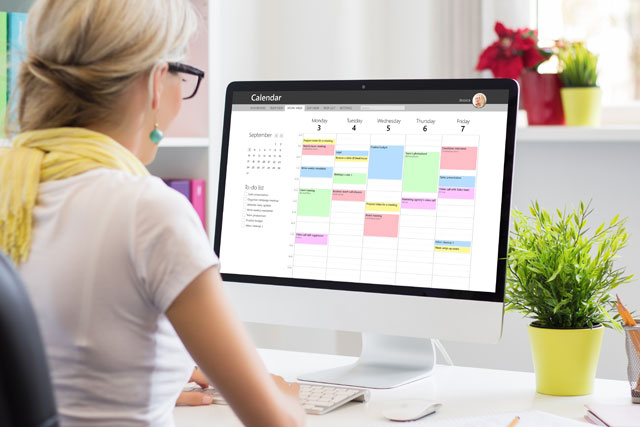Preparing an Effective Speech: Outlining and Organizing
Many people who are daunted at the prospect of writing and delivering a speech make themselves even more anxious by starting to write their speech without the proper preparation. Having an outline is essential to designing a speech. Just as a writer would never begin writing a book without knowing how the chapters will be divided, a speech should never be written unless its main points are divided into a well designed outline. In addition to ensuring that your main points are expressed, an outline will have a significant effect on decreasing your anxiety in giving a speech. Having a good plan in place will give you some peace of mind.
Let us begin with examining each of the benefits of outlining in some detail.
An outline helps you, at a glance, to visualize your entire speech. This ensures that all of your main points, their corresponding supporting points, and evidence, can be placed in their appropriate places. An outline does not need to be long or substantial. In fact, each line in an outline should be very concise.
Since you are able to visualize your entire speech by using an outline, you can quickly determine if you have forgotten an important point or if you have omitted any supporting evidence.
Having an outline will help you to memorize your speech, if you choose to do so. You will have a better understanding of how your speech is organized and this will build your self-confidence. Having more self-confidence will significantly help you to deliver an outstanding speech.
Two popular types of outlines are the keyword outline and the note card outline.
A keyword outline is used to encapsulate points into brief phrases or even single words. Such an outline does not take a great deal of time to prepare, and it will significantly help you to memorize the structure of your speech. It is easier to memorize the organization of one page of keywords than it is to memorize the placement and content of all your paragraphs and sections of an entire speech.
Example of an Outline
- Principle Point
- Supporting Evidence or Fact # 1
- Supporting Evidence of Fact # 2
- Principle Point
- Supporting Evidence or Fact # 1
- Supporting Evidence of Fact # 2
- Conclusion
- Restate Message
- Offer Summary of Evidence
With your outline in place, it is time to organize your speech so that it is easy for the audience to understand your main message. We will discuss time limits, the order of subjects, and how to lay the foundation for your speech properly . You will use your outline during this part of the process. An outline is very simple to edit. You can easily rearrange the order of your ideas, whether you have used a keyword or note card outline.
Let us first talk about time. If you have been invited to give a speech and you have been allotted a specific amount of time, there is obviously not much thought that must go into how long your speech should be. Unless you plan on greatly disappointing your host and the audience, you will speak for the given amount of time. However, many public speakers are given a good amount of discretion in deciding the length of their speeches. There is one simple rule for the length a speech; it should be as short as possible. Many speakers, especially those that are just beginning, make the mistake of equating a long speech with substance. This is not necessarily the case. In fact, a shorter speech that very explicitly and effectively delivers its message will be long remembered as a powerful speech, whereas a long, rambling speech will be easily forgotten.
You should keep in mind that your audience is listening to your speech, not reading it. This means that the order in which you present your topics should be in an easy-to-follow, logical order.
There are no firm rules that govern the order of topics, expect for one simple rule, your audience should be able to determine, on their own, the organization structure that you have chosen. If, for example, you have chosen a numerical order or alphabetical order for your subjects, this of course, will, become apparent to the audience. However, if you have chosen another order of presenting your topics, ensure that it is an order that makes sense and is logical for your audience.
If you were to simply read aloud of list of facts, one after another, to an audience, you would most certainly bore them very quickly. However, if you express a fact, and then present some examples (evidence, proof, imagery, and so forth) that offer support for your fact, you will have a much more lively presentation that will more effectively deliver your message. Do not present all of your facts and evidence with equal weight. Some facts and evidence must be subordinated. That is, some of them will be used as sub-points to a main point. This is where the effectiveness of using an outline in clearly on display.
As we learned in the chapter devoted to choosing a topic, if you are asked to choose a topic for a speech, you must ensure that your topic is narrow enough to entertain and inform an audience. If, for example, you were giving a speech on the history of the United States Presidents, it would be an extremely boring and an ineffective speech if you chose to spend a very short amount of time on every single president and present them in chronological order. In such a speech, there would be very little substance devoted to each president. Consequently, the audience will not get the "message," or in this case, information. Nonetheless, if you were to condense your speech into a more specific time frame, for example, the Presidents of Post-World War II, you would have a much more useful topic for an effective speech.
Before we examine some methods of introduction, let us examine the main objectives that every speech opener should accomplish.
-
Grab the audience's attention.
-
Offer a brief preview of your speech (the statement of your main message).
-
Create interest; make them want to know more.
-
Establish your credibility.
-
Connect with the audience on a personal level.
As you begin to think of what you want to say during your opener, put yourself in the audience's position. Would you want the introduction to be a quotation from an influential person that perhaps will inspire you? How about a question? Questions are sometimes effective, as we will discuss later, in grabbing an audience's attention. You could also tell a little story, give a simple fact, or open with a comment about the local community.
Speakers who choose to open their speeches with a short story often combine two elements: a little anecdote and humor. The story, which is often a long joke that culminates with a funny punch line, is a great way to encapsulate your entire main message. It will accomplish several objectives: it will summarize your message by using a metaphor, it will grab the audience's attention (everyone loves a story), and, if you add a little humor, it will enable you to connect with the audience personally. It is a great way to open a speech.
Keep in mind that your story does not have to be true if it is intended as a joke. If you use the expression, for example, "There was once an old man who walked into a bar." it will be immediately obvious to the audience that you are using an anecdote (a little story) that is most likely intended to entertain.
If you open your speech with a question, you are essentially inviting the audience to think. The question is rhetorical from the speaker's perspective because he or she is not expecting an answer, but the question is being posed to every audience member. Even it is it a simple question, even one that requires a one word answer, the audience is "forced" to think about your question. This question will get them focused, grab their attention, and it will enable you to connect with your audience.
One tactic that you might want to use in drafting your question is to directly, and personally, involve the audience in your question. Make the question about the audience. For example, if you were speaking to a group of fund raising professionals, you might open your speech by asking, "Does anyone know what group in the United States has raised the most funds per person than any other organization?" Of course, the answer is going to be the audience to whom you are giving this speech. This type of question opening serves many purposes, it flatters the audience (always a good thing), it gives them a little piece of information that not all people might have known, and it will certainly grab their attention, and will get the audience interested in knowing more.
One of the surefire ways of connecting with an audience is to make them feel proud of their community. You can then use some of the more flattering and remarkable facts that you learned as your opening. Most of these facts can be used in question format, as we just discussed. Some will not. You might have done some research by reading recent local news stories that relate to your topic or main message. Use this story in your opening. It will notify the audience that you have made the effort to learn more about them.
If you are a professional public speaker, you may consider starting a collection of great opening ideas. If you read something in the newspaper or hear a good industry related joke, you might want to save the idea in a folder. The next time you are going to write a speech, you will have some fresh (and current) ideas to use.
A word of caution is in order about the use of factoids, anecdotes, and other opening techniques. Nearly everyone knows a great joke, and many people actively look for instances when they can use it, at parties, at work, or elsewhere. While this might endear you to some people, keep in mind that what your coworkers or friends think is brilliant or hilarious might not be appropriate for a speech. Do not try to cram your joke into a speech by slightly modifying it to fit your topic. Resist making this amateurish mistake. The opening of a speech is important enough that you need to be certain that your material is appropriate for your situation and the audience.






























